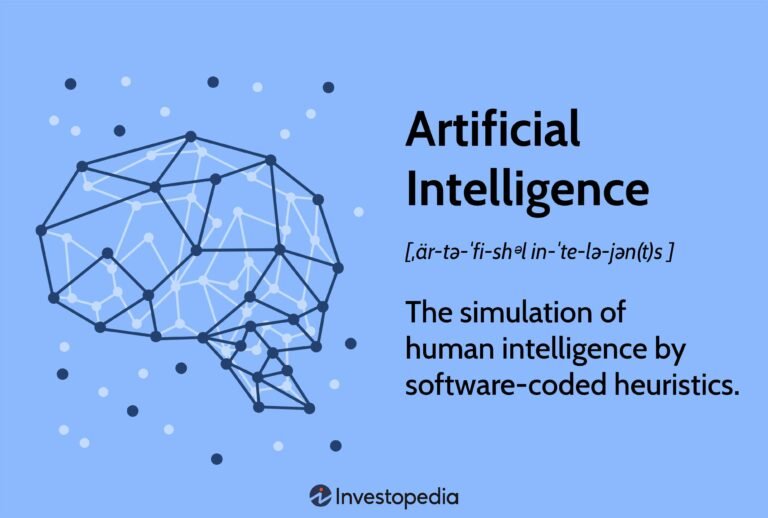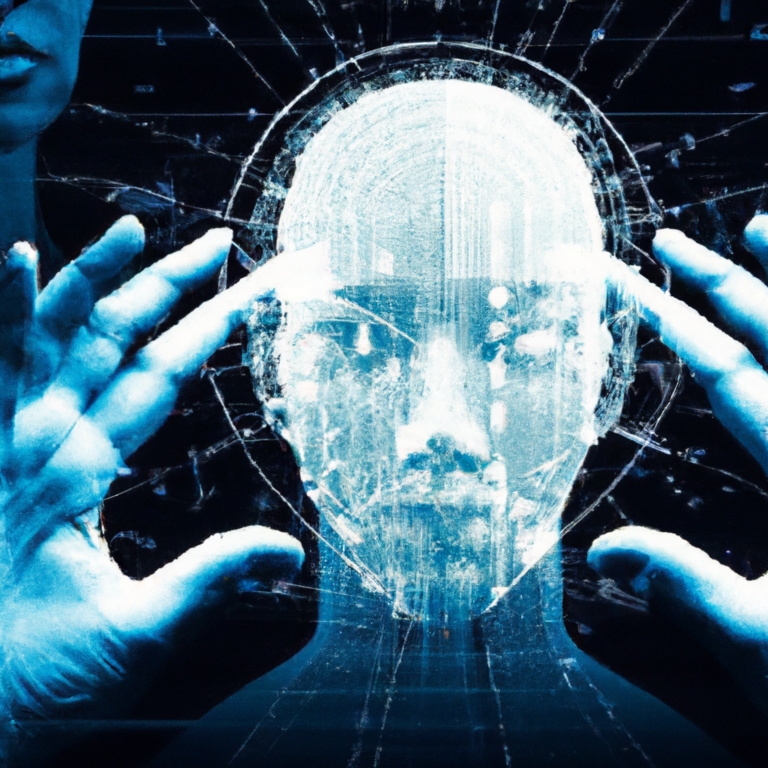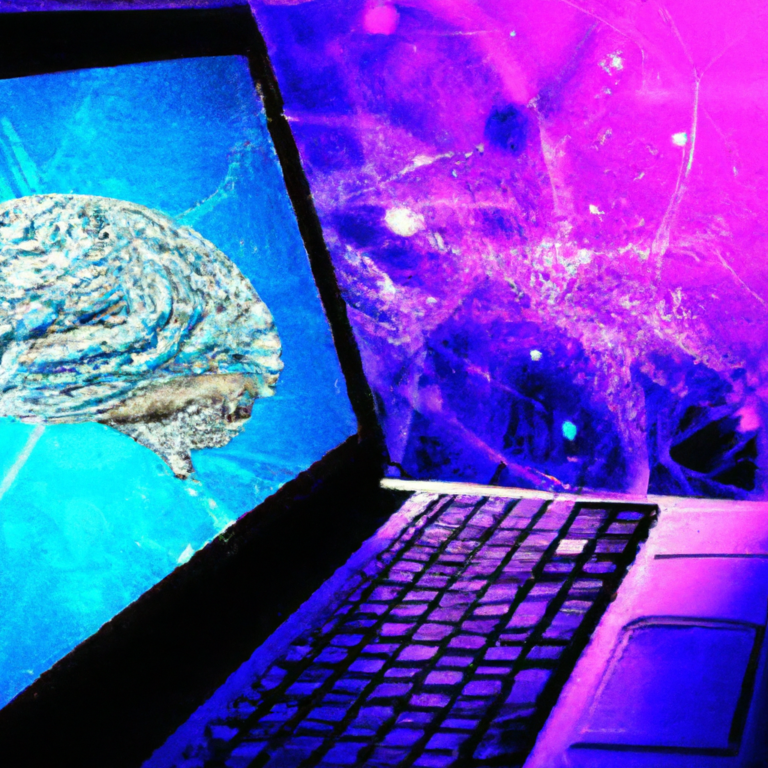How To Protect Yourself From AI Bias

In today’s rapidly advancing technological landscape, the influence of artificial intelligence (AI) is becoming increasingly pervasive. While AI offers countless benefits, there is a growing concern about the presence of bias within these systems. As individuals, it is crucial to understand how to safeguard ourselves from AI bias to ensure fair treatment and equal opportunities. This article explores actionable steps that you can take to protect yourself from AI bias and navigate this evolving technological terrain with confidence.

Understanding AI Bias
Artificial Intelligence (AI) has become an integral part of our lives, shaping how we make decisions and interact with various technological systems. However, it is crucial to understand that AI systems can also possess biases. AI bias refers to the potential for artificial intelligence algorithms to discriminate against particular individuals or groups, leading to unfair or unequal treatment. It is essential to grasp the concept of AI bias, the different types of bias that can exist, and the far-reaching impact it can have on society.
The concept of AI bias
AI bias is a result of the bias present in the data used to train AI models. When developing AI systems, data is utilized to train algorithms, enabling them to learn patterns and make predictions or decisions based on that data. If the training data is biased, the AI system may reproduce and amplify those biases, resulting in unfair or discriminatory outcomes.
Types of AI bias
Various types of biases can exist within AI systems, each with its unique implications. Some common forms of AI bias include:
-
Prejudice Bias: AI systems can reflect the prejudices present in society, perpetuating inequalities and discrimination against certain demographic groups.
-
Sampling Bias: If the training data used to develop an AI system is not representative or balanced, it can lead to skewed results and unfair outcomes. For example, if a facial recognition system is trained primarily on data of a specific ethnicity, it may struggle to accurately identify faces from other ethnicities.
-
Algorithmic Bias: Bias can also emerge from the algorithms themselves. Algorithmic bias occurs when the underlying mathematical formula of an AI system disproportionately favors certain groups or produces unfair decisions.
The impact of AI bias
AI bias can significantly impact individuals and communities, perpetuating and reinforcing social inequalities. Inadequately addressing AI bias can lead to discriminatory practices, exclusion, and lack of opportunities for certain groups. Whether it is biased hiring processes, unfair lending decisions, or discriminatory law enforcement algorithms, the consequences of AI bias can be far-reaching. Understanding and addressing AI bias is crucial to building a fair and equitable society.
Identifying AI Bias
Recognizing AI bias is the first step towards mitigating its adverse effects. By understanding how bias manifests within AI systems, individuals, organizations, and developers can take proactive steps to rectify and prevent bias-related issues.
Recognizing biased results
One important way to identify AI bias is through the examination of the results produced by the system. If the output consistently favors or disfavors certain groups, it may indicate the presence of bias. For example, if an AI-driven loan approval system predominantly rejects loan applications from minority communities despite similar financial profiles, it may be an indication of racial bias.
Unintentional bias in AI systems
AI bias can often be unintentional and result from biased training data or algorithmic design choices. Therefore, it is crucial to thoroughly review and understand the training process of an AI system to identify any potential sources of unintentional bias. By critically analyzing the choices made during the development of an AI model, it becomes easier to identify and address any unintentional bias that may have been introduced.
Unfair representation in training data
Biased training data is a significant source of AI bias. To identify and address bias, it is essential to assess the representativeness and fairness of the data used to train the AI system. If the training data lacks diversity or includes unequal representation of different groups, the resulting AI system is more likely to exhibit biased behavior. Careful evaluation of the training data can help identify any unfair representation and take corrective measures.
Evaluating AI Systems for Bias
To ensure AI systems are fair and unbiased, it is necessary to actively assess and evaluate the systems for any biases that may have been introduced during development. This evaluation process involves various considerations, such as testing for bias, utilizing diverse datasets for training, and assessing data quality.
Testing for bias
Different methods and tools can be employed to test the presence of bias in AI systems. These tests aim to identify and quantify any discriminatory patterns that may exist. By conducting rigorous bias testing, developers can gain insights into the behavior of their AI systems and take appropriate actions to rectify biases.
Diverse datasets for training
Using diverse and representative datasets is crucial for reducing AI bias. By incorporating data that reflects the real-world diversity of the target population, developers stand a better chance of training AI systems that produce fair and equitable outcomes. Diverse datasets help expose the AI system to a wide range of perspectives, reducing the likelihood of biases that favor specific groups.
Assessing data quality
Apart from diversity, the quality of data used for training AI systems is also essential. Data should be accurate, reliable, and up-to-date to ensure that biases are not inadvertently reinforced during training. Conducting thorough data quality assessments can help identify potential sources of bias and eliminate any shortcomings that may lead to biased outcomes.
Mitigating AI Bias
Once AI bias has been identified in a system, it is crucial to take effective measures to mitigate its impact. Implementing fairness metrics, enhancing transparency in algorithms, and incorporating diverse perspectives are some of the key strategies to mitigate AI bias.
Implementing fairness metrics
Fairness metrics are tools and techniques that developers can use to assess and mitigate bias within AI systems. By explicitly defining fairness criteria and measuring the system’s performance against those criteria, developers can identify and address biased behavior. Implementing fairness metrics helps ensure that AI systems treat individuals and groups fairly and equitably.
Enhancing transparency in algorithms
Transparency is essential to address AI bias effectively. Developers should strive to make their AI algorithms transparent and easily understandable. By providing insights into the decision-making process of an AI system, users and stakeholders can better assess and identify potential biases. Transparency also allows for greater scrutiny and accountability, ensuring that biased behavior is detected and corrected promptly.
Including diverse perspectives in development
Diverse representation in AI development teams is crucial to mitigating bias. By including individuals from different backgrounds, cultures, and lived experiences, developers can identify potential biases and address blind spots. Diverse perspectives contribute to a wholesome approach that accounts for the needs and experiences of all individuals and communities who may interact with the AI system.

Ethical Considerations
AI bias raises significant ethical concerns that must be addressed to ensure the fair and just utilization of AI systems. Addressing ethical implications, ensuring accountability for bias, and maintaining user trust are essential considerations in the development and deployment of AI technologies.
Addressing ethical implications
The development and deployment of AI systems should be guided by ethical principles that prioritize fairness, accountability, and non-discrimination. It is essential for developers and organizations to actively consider and address the ethical implications of their AI systems. By incorporating ethical frameworks and standards into AI development practices, the risk of bias can be significantly reduced.
Ensuring accountability for bias
Accountability is a vital aspect of mitigating AI bias. Developers and organizations must take responsibility for any biased behavior exhibited by their AI systems. This includes establishing mechanisms for users to report bias-related issues and actively addressing and rectifying those issues. By fostering a culture of accountability, developers can instill confidence and trust in their AI systems.
Maintaining user trust
Building and maintaining user trust is crucial for the successful adoption of AI technology. Users should feel confident that the AI systems they interact with are fair, unbiased, and respect their rights and dignity. To maintain trust, organizations should prioritize transparency, address bias-related concerns promptly, and provide avenues for user feedback and engagement.
Legal Frameworks and Regulations
To mitigate AI bias effectively, legal frameworks and regulations play a crucial role. Governments and regulatory bodies worldwide are increasingly recognizing the need to address AI bias through specific measures and legislation.
Regulatory measures against AI bias
Regulatory bodies are taking steps to ensure fairness and accountability in AI systems. They are formulating guidelines and regulations that require organizations to evaluate, disclose, and minimize biases in their AI technologies. By imposing regulatory measures specifically aimed at reducing AI bias, governments are signaling the importance of ethical AI development.
Privacy and data protection laws
Privacy and data protection laws are also relevant in the context of AI bias. These laws aim to safeguard individuals’ personal information, preventing it from being misused or leveraged to perpetuate biases. By adhering to robust privacy and data protection laws, organizations can uphold the rights and privacy of individuals while mitigating the risk of bias.
Possible legal remedies
In cases where bias-related harm causes significant damage, legal remedies can be sought. Existing legal frameworks can be invoked to address bias-related discrimination and unfair treatment caused by AI systems. Individuals and communities impacted by AI bias can seek legal recourse based on existing antidiscrimination laws or other relevant regulations.
Education and Awareness
To effectively tackle AI bias, widespread education and awareness initiatives are crucial. By promoting AI bias awareness, incorporating bias education in AI training, and raising public consciousness, individuals and communities can develop the knowledge and skills needed to challenge bias and discrimination within AI technologies.
Promoting AI bias awareness
Raising awareness about AI bias is a critical step in ensuring a fair and equitable AI-driven future. Organizations, educational institutions, and governments should disseminate information about AI bias and its implications through campaigns, workshops, and educational programs. By engaging in dialogue and promoting awareness, individuals become better equipped to recognize and address bias effectively.
Incorporating bias education in AI training
One of the fundamental ways to combat AI bias is to incorporate bias education directly into AI training programs. By providing developers and AI professionals with comprehensive training on bias recognition, evaluation, and mitigation techniques, the industry can proactively address the issue. Incorporating bias education also helps bridge the knowledge gap and ensures that future AI practitioners are equipped to create unbiased systems.
Raising public consciousness
Public consciousness is essential for encouraging responsible AI development and deployment. Efforts should be made to engage and educate the general public about AI bias, its potential consequences, and how it can be mitigated. By ensuring that individuals are informed consumers and users of AI technologies, society can collectively demand fairness, transparency, and accountability from developers and organizations.
Collaborative Efforts
To tackle AI bias effectively, collaborative efforts are essential. Industry collaborations to reduce bias, sharing best practices and standards, and open-source initiatives for fairness can significantly contribute to minimizing AI bias and promoting equitable AI development.
Industry collaborations to reduce bias
Collaborative efforts among industry players can have a substantial impact on reducing AI bias. By sharing insights, experiences, and resources, organizations can collectively work towards building fair and unbiased AI systems. Collaborations can involve knowledge exchange, joint research, and the development of standards and guidelines to address AI bias effectively.
Sharing best practices and standards
Sharing best practices and establishing industry-wide standards is essential to ensure consistent efforts in mitigating AI bias. When organizations come together to share their successful strategies and approaches, it benefits the entire AI ecosystem. By establishing agreed-upon standards, developers can benchmark their systems against recognized guidelines and continuously improve their approaches to prevent bias.
Open-source initiatives for fairness
Open-source initiatives play a significant role in fostering fairness and reducing AI bias. By providing open access to algorithms, datasets, and tools, developers worldwide can contribute to the development of unbiased AI systems. Open-source projects encourage collaboration, peer review, and transparency, enabling the global community to collectively build fairer and more equitable AI technologies.
Self-Protection Strategies
Individuals can take proactive steps to protect themselves from the potential biases present in AI systems. Understanding AI recommendations and decisions, cross-verifying with alternative sources, and utilizing user-controlled customization and settings are effective self-protection strategies.
Understanding AI recommendations and decisions
Being aware of how AI systems make recommendations and decisions is crucial. By understanding the underlying algorithms and their potential biases, individuals can critically evaluate the suggestions provided by AI technologies. This awareness empowers users to question and challenge biased outcomes, ultimately making more informed decisions.
Cross-verifying with alternative sources
Cross-verifying information and recommendations with alternative sources is an effective strategy to mitigate AI bias. By seeking diverse perspectives and seeking information from multiple sources, individuals can counteract any potential biases that may be present in a single AI system. This approach helps ensure a well-rounded understanding of a topic or situation and reduces reliance on potentially biased information.
User-controlled customization and settings
Many AI systems offer user-controlled customization and settings. Leveraging these options allows individuals to tailor the AI system’s behavior to their own preferences and values. By actively customizing AI systems to align with their needs and values, users can minimize the risk of being subjected to biased outcomes. User-controlled customization empowers individuals to tailor AI technologies to their specific requirements while avoiding any potential biases that may be present.
Continuous Monitoring and Adaptation
Addressing AI bias is an ongoing process that requires continuous monitoring, evaluation, and adaptation. Regularly evaluating AI systems, updating algorithms and models, and adapting to evolving ethical standards are vital to ensure that bias remains mitigated and AI technologies continue to uphold fairness and inclusivity.
Regularly evaluating AI systems
Continuous evaluation of AI systems is essential to identify and address any emerging bias issues. By regularly monitoring the system’s behavior, developers can proactively identify potential biases and take corrective measures promptly. Ongoing evaluation ensures that AI systems remain aligned with ethical standards and do not inadvertently perpetuate biases.
Updating algorithms and models
As technology and understanding of bias evolve, it is crucial to update AI algorithms and models accordingly. By integrating the latest research and advancements in AI fairness, developers can continuously improve their systems’ ability to detect and mitigate bias. Regular updates and refinements help ensure that AI technologies stay at the forefront of bias mitigation efforts.
Adapting to evolving ethical standards
Ethical standards surrounding AI bias are continually evolving. It is vital for developers and organizations to keep abreast of these standards and adapt their practices accordingly. By staying informed about emerging ethical considerations and incorporating them into their development processes, developers can build AI systems that align with the latest benchmarks of fairness and non-discrimination.
In conclusion, understanding, identifying, evaluating, and mitigating AI bias are essential steps towards building fair and equitable AI systems. Through a combination of ethical considerations, legal frameworks, collaborative efforts, and individual self-protection strategies, we can collectively ensure that AI technologies contribute to a more inclusive and unbiased society. By actively addressing AI bias, we shape the future of AI to be fair, transparent, and respectful of the rights and dignity of all individuals.
Want to write articles like us? Get your copy of AI WiseMind here!






